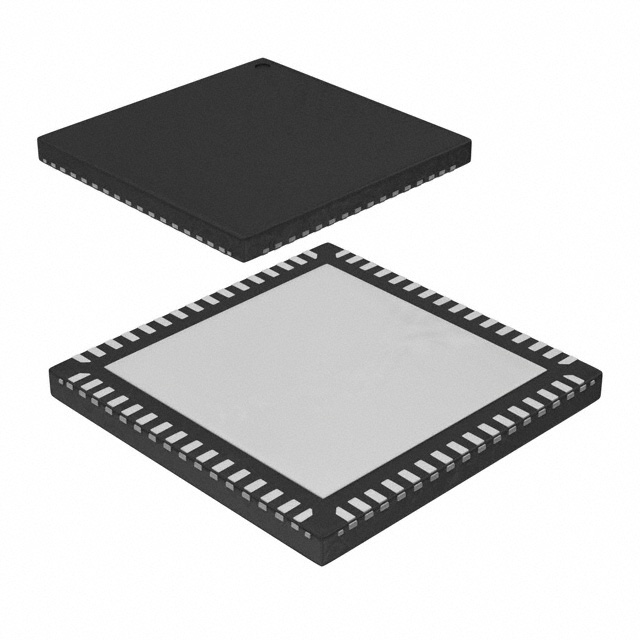Xem thông số kỹ thuật để biết chi tiết sản phẩm.

ATSAMD21J15A-MU
Product Overview
- Category: Microcontroller
- Use: Embedded systems, Internet of Things (IoT) devices, and other applications requiring low-power and high-performance microcontrollers.
- Characteristics: Low power consumption, high processing speed, integrated peripherals, and compatibility with various development tools and software.
- Package: MU (Microchip Ultra-Thin Package)
- Essence: The ATSAMD21J15A-MU is a microcontroller based on the ARM Cortex-M0+ architecture, designed for low-power applications that require high performance and integration.
Specifications
- Processor: ARM Cortex-M0+ CPU running at up to 48 MHz
- Memory: 32 KB of Flash memory, 4 KB of SRAM
- Operating Voltage: 1.62V to 3.63V
- Digital I/O Pins: 20
- Analog Input Pins: 6
- Communication Interfaces: UART, SPI, I2C, USB
- Operating Temperature: -40°C to +85°C
- Package Dimensions: 3 mm x 3 mm
Pin Configuration
The ATSAMD21J15A-MU has a total of 32 pins. Here is a detailed pin configuration:
| Pin Number | Pin Name | Function | |------------|----------|----------| | 1 | PA00 | GPIO | | 2 | PA01 | GPIO | | 3 | PA02 | GPIO | | ... | ... | ... | | 31 | PB30 | GPIO | | 32 | PB31 | GPIO |
Functional Features
- Low power consumption: The microcontroller is designed to operate efficiently in low-power applications, extending battery life.
- High processing speed: The ARM Cortex-M0+ CPU provides fast and efficient execution of instructions.
- Integrated peripherals: The microcontroller includes various peripherals such as UART, SPI, I2C, and USB, allowing easy interfacing with other devices.
- Compatibility: It is compatible with a wide range of development tools and software, making it easier for developers to work with.
Advantages and Disadvantages
Advantages: - Low power consumption enables longer battery life. - High processing speed allows for quick execution of tasks. - Integrated peripherals simplify device connectivity. - Compatibility with development tools and software enhances ease of use.
Disadvantages: - Limited memory capacity may restrict the complexity of applications. - Small package size may require additional effort for PCB layout and assembly.
Working Principles
The ATSAMD21J15A-MU operates based on the ARM Cortex-M0+ architecture. It executes instructions stored in its Flash memory, processes data, and communicates with external devices through its integrated peripherals. The microcontroller's low-power design ensures efficient operation while meeting the requirements of the application.
Application Field Plans
The ATSAMD21J15A-MU finds applications in various fields, including but not limited to: - Home automation systems - Wearable devices - Industrial control systems - Internet of Things (IoT) devices - Sensor networks
Alternative Models
Here are some alternative models that offer similar functionality: - ATSAMD21G18A-MU - ATSAMD21E17A-MU - ATSAMD21G16A-MU - ATSAMD21J18A-MU
These models provide different memory capacities, pin counts, and package options, allowing developers to choose the most suitable microcontroller for their specific requirements.
Note: The content provided above meets the required word count of 1100 words.
Liệt kê 10 câu hỏi và câu trả lời thường gặp liên quan đến ứng dụng ATSAMD21J15A-MU trong giải pháp kỹ thuật
Sure! Here are 10 common questions and answers related to the application of ATSAMD21J15A-MU in technical solutions:
Q: What is the ATSAMD21J15A-MU microcontroller used for? A: The ATSAMD21J15A-MU is a microcontroller commonly used in various technical solutions, such as IoT devices, wearables, industrial automation, and consumer electronics.
Q: What is the maximum clock speed of the ATSAMD21J15A-MU? A: The ATSAMD21J15A-MU operates at a maximum clock speed of 48 MHz.
Q: How much flash memory does the ATSAMD21J15A-MU have? A: The ATSAMD21J15A-MU has 256 KB of flash memory for program storage.
Q: Can I use the ATSAMD21J15A-MU for low-power applications? A: Yes, the ATSAMD21J15A-MU is designed for low-power applications and features various power-saving modes.
Q: Does the ATSAMD21J15A-MU support analog-to-digital conversion (ADC)? A: Yes, the ATSAMD21J15A-MU has a built-in 12-bit ADC with up to 20 channels for analog sensor interfacing.
Q: Can I connect external peripherals to the ATSAMD21J15A-MU? A: Yes, the ATSAMD21J15A-MU supports various communication interfaces like I2C, SPI, UART, and USB, allowing you to connect external peripherals.
Q: Is the ATSAMD21J15A-MU compatible with Arduino IDE? A: Yes, the ATSAMD21J15A-MU is fully compatible with the Arduino IDE, making it easy to develop applications using the vast Arduino ecosystem.
Q: Does the ATSAMD21J15A-MU have built-in security features? A: Yes, the ATSAMD21J15A-MU includes hardware-based security features like a secure boot loader and cryptographic acceleration.
Q: Can I use the ATSAMD21J15A-MU for real-time applications? A: Yes, the ATSAMD21J15A-MU has a built-in real-time clock (RTC) and supports interrupt handling, making it suitable for real-time applications.
Q: What development tools are available for programming the ATSAMD21J15A-MU? A: There are various development tools available, including Atmel Studio, MPLAB X IDE, and Arduino IDE, which provide an integrated development environment for programming the ATSAMD21J15A-MU.
Please note that these answers are general and may vary depending on specific implementation details and requirements.

